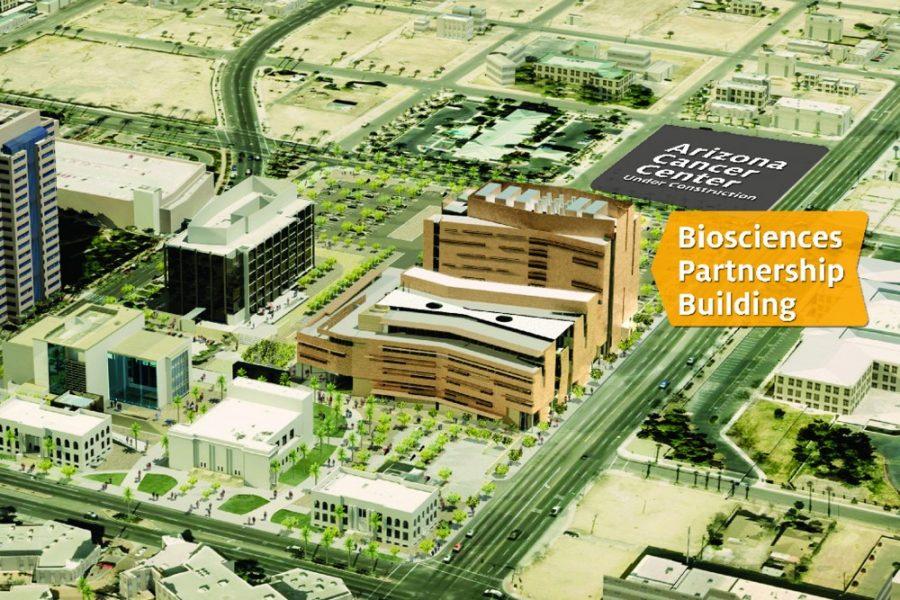The UA and the city of Phoenix have been given the green light to begin construction on a 10-story, $136 million research building that will be the newest addition to the downtown Phoenix Biomedical Campus.
The Arizona Board of Regents approved plans for the production of the massive 245,000-square-foot Biosciences Partnership Building on Thursday and construction could begin as early as September, school officials said.
“In this building partnerships will be forged in which our scholars and researchers will be looking for the answers to some pretty daunting questions,” President Ann Weaver Hart said in a video with Phoenix Mayor Greg Stanton.
The newest building on the Phoenix Biomedical Campus will be located directly north of the Health Sciences Education Building near Seventh Street and Fillmore Street in downtown Phoenix, according to a press release by the UA College of Medicine — Phoenix last week.
The building site, which was home to a forgotten high school in the heart of Phoenix just a decade ago, is now something valuable, Stanton said.
“When Phoenix made its initial investment in the downtown Biomedical Campus just over a decade ago we believed that it would pay dividends for years to come,” Stanton said. “We have seen that investment pay off.”
According to a press release, the new Biosciences Partnership Building will provide nearly 500 jobs in design and construction and another 360 permanent jobs.
The research will focus on a range of areas including neurosciences, health care outcomes, cancer and precision medicine with a workforce consisting of UA researchers and their staff and students, school officials said.
“Look what change, what positive change can come with vision, with collaboration, with partnership and now with continuing momentum,” Stanton said in regards to the continuing partnership efforts made between the UA, the city of Phoenix and the board of regents.
“[The Biosciences Partnership Building] will mean more lab space for the UA and give them even more tools to lead the way on neuroscience and cancer research and put an emphasis on health care outcomes,” Stanton said.
The funding for the new building is already in place as part of the Stimulus Plan for Economic and Educational Development bonds approved by the legislature in 2008 that allowed the three Arizona universities to construct new buildings on their respective campuses, according to Judy Bernas, associate vice president of university relations.
Hart referred to the financial circumstances as an investment by the taxpayers and said that the project is part of a vision for economic and job growth in the state. She said it would help create jobs that would keep college graduates in Arizona.
“All of this important work will have a major effect on our state — bigger breakthroughs and better health outcomes for all Arizonans,” Hart said.








